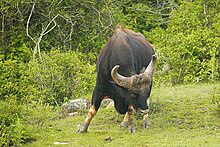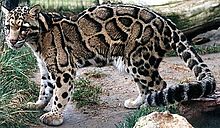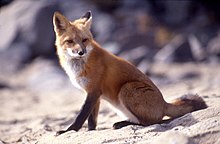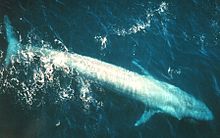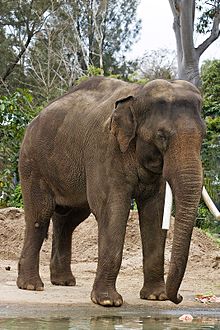J u m p t o c o n t e n t
M a i n m e n u
M a i n m e n u
N a v i g a t i o n
● M a i n p a g e ● C o n t e n t s ● C u r r e n t e v e n t s ● R a n d o m a r t i c l e ● A b o u t W i k i p e d i a ● C o n t a c t u s ● D o n a t e
C o n t r i b u t e
● H e l p ● L e a r n t o e d i t ● C o m m u n i t y p o r t a l ● R e c e n t c h a n g e s ● U p l o a d f i l e
S e a r c h
Search
A p p e a r a n c e
● C r e a t e a c c o u n t ● L o g i n
P e r s o n a l t o o l s
● C r e a t e a c c o u n t ● L o g i n
P a g e s f o r l o g g e d o u t e d i t o r s l e a r n m o r e ● C o n t r i b u t i o n s ● T a l k
( T o p )
1 O r d e r : A r t i o d a c t y l a ( e v e n - t o e d u n g u l a t e s )
2 O r d e r : C a r n i v o r a ( c a r n i v o r a n s )
3 O r d e r : C e t a c e a ( w h a l e s )
4 O r d e r : C h i r o p t e r a ( b a t s )
5 O r d e r : L a g o m o r p h a ( l a g o m o r p h s )
6 O r d e r : P h o l i d o t a ( p a n g o l i n s )
7 O r d e r : P r i m a t e s
8 O r d e r : P r o b o s c i d e a ( e l e p h a n t s )
9 O r d e r : R o d e n t i a ( r o d e n t s )
10 O r d e r : S i r e n i a ( m a n a t e e s a n d d u g o n g s )
11 O r d e r : S o r i c o m o r p h a ( s h r e w s )
12 L o c a l l y e x t i n c t
13 S e e a l s o
14 R e f e r e n c e s
15 E x t e r n a l l i n k s
T o g g l e t h e t a b l e o f c o n t e n t s
L i s t o f m a m m a l s o f B a n g l a d e s h
2 l a n g u a g e s
● ব া ং ল া ● Р у с с к и й
E d i t l i n k s
● A r t i c l e ● T a l k
E n g l i s h
● R e a d ● E d i t ● V i e w h i s t o r y
T o o l s
T o o l s
A c t i o n s
● R e a d ● E d i t ● V i e w h i s t o r y
G e n e r a l
● W h a t l i n k s h e r e ● R e l a t e d c h a n g e s ● U p l o a d f i l e ● S p e c i a l p a g e s ● P e r m a n e n t l i n k ● P a g e i n f o r m a t i o n ● C i t e t h i s p a g e ● G e t s h o r t e n e d U R L ● D o w n l o a d Q R c o d e ● W i k i d a t a i t e m
P r i n t / e x p o r t
● D o w n l o a d a s P D F ● P r i n t a b l e v e r s i o n
I n o t h e r p r o j e c t s
● W i k i m e d i a C o m m o n s
A p p e a r a n c e
F r o m W i k i p e d i a , t h e f r e e e n c y c l o p e d i a
The Bengal tiger , Panthera tigris tigris , is the national animal of Bangladesh
This is a list of the mammal species recorded in Bangladesh . There are eighty-nine mammal species in Bangladesh , of which three are critically endangered, twelve are endangered, sixteen are vulnerable, and four are near threatened.[1]
The following tags are used to highlight each species' conservation status as assessed by the International Union for Conservation of Nature :
EX Extinct No reasonable doubt that the last individual has died.
EW Extinct in the wild Known only to survive in captivity or as a naturalized population well outside its previous range.
CR Critically endangered The species is in imminent risk of extinction in the wild.
EN Endangered The species is facing an extremely high risk of extinction in the wild.
VU Vulnerable The species is facing a high risk of extinction in the wild.
NT Near threatened The species does not meet any of the criteria that would categorise it as risking extinction but it is likely to do so in the future.
LC Least concern There are no current identifiable risks to the species.
DD Data deficient There is inadequate information to make an assessment of the risks to this species.
[ edit ] Gaur
The even-toed ungulates are ungulates whose weight is borne about equally by the third and fourth toes, rather than mostly or entirely by the third as in perissodactyls . There are about 220 artiodactyl species, including many that are of great economic importance to humans.
[ edit ] Clouded leopard Red fox
There are over 260 species of carnivorans, the majority of which eat meat as their primary dietary item. They have a characteristic skull shape and dentition.
[ edit ] Blue whale Dolphins in Al Bandar bay Risso's dolphin
The order Cetacea includes whales , dolphins and porpoises . They are the mammals most fully adapted to aquatic life with a spindle-shaped nearly hairless body, protected by a thick layer of blubber, and forelimbs and tail modified to provide propulsion underwater.
[ edit ]
The bats' most distinguishing feature is that their forelimbs are developed as wings, making them the only mammals capable of flight. Bat species account for about 20% of all mammals.
[ edit ]
The lagomorphs comprise two families, Leporidae (hares and rabbits ), and Ochotonidae (pikas ). Though they can resemble rodents , and were classified as a superfamily in that order until the early 20th century, they have since been considered a separate order. They differ from rodents in a number of physical characteristics, such as having four incisors in the upper jaw rather than two.
[ edit ] Sunda pangolin
The order Pholidota comprises the eight species of pangolin. Pangolins are anteaters and have the powerful claws, elongated snout and long tongue seen in the other unrelated anteater species.
[ edit ] Crab-eating macaque Gray langur
The order Primates contains humans and their closest relatives: lemurs , lorisoids , monkeys , and apes .
[ edit ] Asian elephant
The elephants comprise three living species, and are the largest living land animals.
[ edit ] Polynesian rat Asiatic long-tailed climbing mouse
Rodents make up the largest order of mammals, with over 40% of mammalian species. They have two incisors in the upper and lower jaw which grow continually and must be kept short by gnawing. Most rodents are small though the capybara can weigh up to 45 kg (100 lb ).
Sirenia (manatees and dugongs)
[ edit ]
Sirenia is an order of fully aquatic, herbivorous mammals that inhabit rivers, estuaries, coastal marine waters, swamps, and marine wetlands. All four species are endangered.
Dugong [ edit ] Asian house shrew
The "shrew-forms" are insectivorous mammals. The shrews and solenodons closely resemble mice while the moles are stout-bodied burrowers.
Locally extinct
[ edit ]
The following species are locally extinct in the country:
Blackbuck , Antilope cervicapra since the end of the 19th century[64] [65]
Banteng , Bos javanicus since the 1940s[64] [66]
Nilgai , Boselaphus tragocamelus since the 1930s[64] [67]
Wild water buffalo , Bubalus arnee since the 1940s[64] [68]
Gray wolf , Canis lupus since the mid 20th century[64]
Sumatran rhinoceros , Dicerorhinus sumatrensis since the 1930s[64] [69]
Sloth bear , Melursus ursinus since the early 21st century[64]
Pygmy hog , Porcula salvanius [70]
Javan rhinoceros , Rhinoceros sondaicus since the 1930s[64] [71]
Indian rhinoceros , Rhinoceros unicornis since the 1930s[64] [72]
Barasingha , Rucervus duvaucelii since the 1950s[64] [73]
See also
[ edit ]
References
[ edit ]
^ This list is derived from the IUCN Red List which lists species of mammals and includes those mammals that have recently been classified as extinct (since 1500 AD). The taxonomy and naming of the individual species is based on those used in existing Wikipedia articles as of 21 May 2007 and supplemented by the common names and taxonomy from the IUCN, Smithsonian Institution, or University of Michigan where no Wikipedia article was available.
^ Duckworth, J. W.; Sankar, K.; Williams, A. C.; Samba Kumar, N. & Timmins, R. J. (2016). "Bos gaurus " . IUCN Red List of Threatened Species 2016 : e.T2891A46363646.
^ Phan, T.D.; Nijhawan, S.; Li, S. & Xiao, L. (2020). "Capricornis sumatraensis " . IUCN Red List of Threatened Species 2020 : e.T162916735A162916910.
^ Duckworth, J.W.; Kumar, N.S.; Anwarul Islam, M.; Baral, H. S. & Timmins, R. (2015). "Axis axis " . IUCN Red List of Threatened Species 2015 : e.T41783A22158006.
^ Timmins, R.J.; Duckworth, J.W.; Samba Kumar, N.; Anwarul Islam, M.; Baral, H.S.; Long, B. & Maxwell, A. (2015). "Axis porcinus " . IUCN Red List of Threatened Species 2015 : e.T41784A22157664.
^ Timmins, R.J.; Kawanishi, K.; Giman, B.; Lynam, A.J.; Chan, B.; Steinmetz, R.; Baral, H. S. & Samba Kumar, N. (2015). "Rusa unicolor " . IUCN Red List of Threatened Species 2015 : e.T41790A85628124.
^ Timmins, R. J.; Duckworth, J. W. & Hedges, S. (2016). "Muntiacus muntjak " . IUCN Red List of Threatened Species 2016 : e.T42190A56005589.
^ Keuling, O. & Leus, K. (2019). "Sus scrofa " . IUCN Red List of Threatened Species 2019 : e.T41775A44141833.
^ McCarthy, J.; Dahal, S.; Dhendup, T.; Gray, T.N.E.; Mukherjee, S.; Rahman, H.; Riordan, P.; Boontua, N. & Wilcox, D. (2015). "Catopuma temminckii " . IUCN Red List of Threatened Species 2015 : e.T4038A97165437.
^ Gray, T.N.E.; Timmins, R.J.; Jathana, D.; Duckworth, J.W.; Baral, H. & Mukherjee, S. (2016). "Felis chaus " . IUCN Red List of Threatened Species 2016 : e.T8540A50651463.
^ Ross, J.; Brodie, J.; Cheyne, S.; Datta, A.; Hearn, A.; Loken, B.; Lynam, A.; McCarthy, J.; Phan, C.; Rasphone, A.; Singh, P.; Wilting, A. (2016). "Pardofelis marmorata " . IUCN Red List of Threatened Species 2016 : e.T16218A97164299.
^ Ross, J.; Brodie, J.; Cheyne, S.; Hearn, A.; Izawa, M.; Loken, B.; Lynam, A.; McCarthy, J.; Mukherjee, S.; Phan, C.; Rasphone, A. & Wilting, A. (2015). "Prionailurus bengalensis " . IUCN Red List of Threatened Species 2015 : e.T18146A50661611.
^ Mukherjee, S.; Appel, A.; Duckworth, J. W.; Sanderson, J.; Dahal, S.; Willcox, D. H. A.; Herranz Muñoz, V.; Malla, G.; Ratnayaka, A.; Kantimahanti, M.; Thudugala, A.; Thaung, R.; Rahman, H. (2016). "Prionailurus viverrinus " . IUCN Red List of Threatened Species 2016 : e.T18150A50662615.
^ Grassman, L.; Lynam, A.; Mohamad, S.; Duckworth, J. W.; Borah, J.; Willcox, D.; Ghimirey, Y.; Reza, A. & Rahman, H. (2016). "Neofelis nebulosa " . IUCN Red List of Threatened Species 2016 : e.T14519A97215090.
^ Stein, A.B.; Athreya, V.; Gerngross, P.; Balme, G.; Henschel, P.; Karanth, U.; Miquelle, D.; Rostro-Garcia, S.; Kamler, J. F.; Laguardia, A.; Khorozyan, I. & Ghoddousi, A. (2019). "Panthera pardus " . IUCN Red List of Threatened Species 2019 : e.T15954A160698029.
^ Goodrich, J.; Lynam, A.; Miquelle, D.; Wibisono, H.; Kawanishi, K.; Pattanavibool, A.; Htun, S.; Tempa, T.; Karki, J.; Jhala, Y. & Karanth, U. (2015). "Panthera tigris " . IUCN Red List of Threatened Species 2015 : e.T15955A50659951.
^ Willcox, D.H.A.; Chutipong, W.; Gray, T.N.E.; Cheyne, S.; Semiadi, G.; Rahman, H.; Coudrat, C.N.Z.; Jennings, A.; Ghimirey, Y.; Ross, J.; Fredriksson, G.; Tilker, A. (2016). "Arctictis binturong " . IUCN Red List of Threatened Species 2016 : e.T41690A45217088.
^ Willcox, D.H.A.; Duckworth, J.W.; Timmins, R.J.; Chutipong, W.; Choudhury, A.; Roberton, S.; Long, B.; Hearn, A. & Ross, J. (2016). "Arctogalidia trivirgata " . IUCN Red List of Threatened Species 2016 : e.T41691A45217378.
^ Duckworth, J.W.; Timmins, R.J.; Chutipong, W.; Choudhury, A.; Mathai, J.; Willcox, D.H.A.; Ghimirey, Y.; Chan, B. & Ross, J. (2016). "Paguma larvata " . IUCN Red List of Threatened Species 2016 : e.T41692A45217601.
^ Duckworth, J.W.; Timmins, R.J.; Choudhury, A.; Chutipong, W.; Willcox, D.H.A.; Mudappa, D.; Rahman, H.; Widmann, P.; Wilting, A. & Xu, W. (2016). "Paradoxurus hermaphroditus " . IUCN Red List of Threatened Species 2016 : e.T41693A45217835.
^ Timmins, R.J.; Duckworth, J.W.; Chutipong, W.; Ghimirey, Y.; Willcox, D.H.A.; Rahman, H.; Long, B. & Choudhury, A. (2016). "Viverra zibetha " . IUCN Red List of Threatened Species 2016 : e.T41709A45220429.
^ Choudhury, A.; Duckworth, J.W.; Timmins, R.; Chutipong, W.; Willcox, D.H.A.; Rahman, H.; Ghimirey, Y. & Mudappa, D. (2015). "Viverricula indica " . IUCN Red List of Threatened Species 2015 : e.T41710A45220632.
^ Jennings, A. & Veron, G. (2016). "Herpestes auropunctatus " . IUCN Red List of Threatened Species 2016 : e.T70204120A70204139.
^ Mudappa, D. & Choudhury, A. (2016). "Herpestes edwardsii " . IUCN Red List of Threatened Species 2016 : e.T41611A45206787.
^ Choudhury, A.; Timmins, R.; Chutipong, W.; Duckworth, J. W.; Mudappa, D. & Willcox, D. H. A. (2015). "Herpestes urva " . IUCN Red List of Threatened Species 2015 : e.T41618A86159618.
^ Hoffmann, M.; Arnold, J.; Duckworth, J. W.; Jhala, Y. ; Kamler, J. F. & Krofel, M. (2018). "Canis aureus " . IUCN Red List of Threatened Species 2018 : e.T118264161A46194820.
^ Kamler, J. F.; Songsasen, N.; Jenks, K.; Srivathsa, A.; Sheng, L. & Kunkel, K. (2015). "Cuon alpinus " . IUCN Red List of Threatened Species 2015 : e.T5953A72477893.
^ Jhala, Y.V. (2016). "Vulpes bengalensis " . IUCN Red List of Threatened Species 2016 : e.T23049A81069636.
^ Hoffmann, M. & Sillero-Zubiri, C. (2016). "Vulpes vulpes " . IUCN Red List of Threatened Species 2016 : e.T23062A46190249.
^ Scotson, L.; Fredriksson, G.; Augeri, D.; Cheah, C.; Ngoprasert, D. & Wai-Ming, W. (2018) [errata version of 2017 assessment]. "Helarctos malayanus " . IUCN Red List of Threatened Species 2017 : e.T9760A123798233.
^ Garshelis, D. L. & Steinmetz, R. (2016). "Ursus thibetanus " . IUCN Red List of Threatened Species 2016 : e.T22824A114252336.
^ Wright, L.; de Silva, P.; Chan, B. & Reza Lubis, I. (2015). "Aonyx cinereus " . IUCN Red List of Threatened Species 2015 : e.T44166A21939068.
^ Helgen, K. & Chan, B. (2016). "Arctonyx albogularis " . IUCN Red List of Threatened Species 2016 : e.T70206273A70206436.
^ Duckworth, J.W.; Timmins, R.J.; Chutipong, W.; Gray, T.N.E.; Long, B.; Helgen, K; Rahman, H.; Choudhury, A. & Willcox, D.H.A. (2016). "Arctonyx collaris " . IUCN Red List of Threatened Species 2016 : e.T70205537A45209459.
^ Roos, A.; Loy, A.; de Silva, P.; Hajkova, P. & Zemanová, B. (2015). "Lutra lutra " . IUCN Red List of Threatened Species 2015 : e.T12419A21935287.
^ de Silva, P.; Khan, W.A.; Kanchanasaka, B.; Reza Lubis, I.; Feeroz, M. M. & Al-Sheikhly, O.F. (2015). "Lutrogale perspicillata " . IUCN Red List of Threatened Species 2015 : e.T12427A21934884.
^ Chutipong, W.; Duckworth, J.W.; Timmins, R.J.; Choudhury, A.; Abramov, A.V.; Roberton, S.; Long, B.; Rahman, H.; Hearn, A.; Dinets, V. & Willcox, D.H.A. (2016). "Martes flavigula " . IUCN Red List of Threatened Species 2016 : e.T41649A45212973.
^ Duckworth, J.W.; Long, B.; Willcox, D.H.A.; Coudrat, C.N.Z.; Timmins, R.J.; Abramov, A.V.; Chan, B. & Chutipong, W. (2016). "Melogale personata " . IUCN Red List of Threatened Species 2016 : e.T41627A45209826.
^ Bangladesh Cetacean
Diversity Project of the Wildlife Conservation Society . 2015. Proposal to establish a marine protected area in the Swatch-of-No-Ground submarine canyon and surrounding coastal waters in the Bay of Bengal (pdf). Retrieved on March 02, 2017
^ a b 2016. 21 new wildlife species found in Bangladesh
^ Smith, B.D.; Braulik, G.T.; Sinha, R. (2012). "Platanista gangetica ssp. gangetica " . IUCN Red List of Threatened Species 2012 : e.T41756A17627639. doi :10.2305/IUCN.UK.2012.RLTS.T41756A17627639.en . Retrieved 12 November 2021 .
^ Minton, G.; Smith, B.D.; Braulik, G.T.; Kreb, D.; Sutaria, D.; Reeves, R. (2018) [errata version of 2017 assessment]. "Orcaella brevirostris " . IUCN Red List of Threatened Species 2017 : e.T15419A123790805. doi :10.2305/IUCN.UK.2017-3.RLTS.T15419A50367860.en . Retrieved 1 July 2024 .
^ Molur, S.; Srinivasulu, C.; Bates, P.; Francis, C. (2008). "Pteropus giganteus " . IUCN Red List of Threatened Species 2008 : e.T18725A8511108. doi :10.2305/IUCN.UK.2008.RLTS.T18725A8511108.en . Retrieved 1 July 2024 .
^ Aryal, A. & Yadav, B. (2019). "Caprolagus hispidus " . IUCN Red List of Threatened Species 2019 : e.T3833A45176688.
^ Nameer, P.O. & Smith, A.T. (2019). "Lepus nigricollis " . IUCN Red List of Threatened Species 2019 : e.T41282A45188041.
^ Mahmood, T.; Challender, D.; Khatiwada, A.; Andleeb, S.; Perera, P.; Trageser, S.; Ghose, A. & Mohapatra, R. (2019). "Manis crassicaudata " . IUCN Red List of Threatened Species 2019 : e.T12761A123583998.
^ Challender, D.; Willcox, D.H.A.; Panjang, E.; Lim, N.; Nash, H.; Heinrich, S. & Chong, J. (2019). "Manis javanica " . IUCN Red List of Threatened Species 2019 : e.T12763A123584856.
^ Challender, D.; Wu, S.; Kaspal, P.; Khatiwada, A.; Ghose, A.; Ching-Min Su, N. & Laxmi Suwal, T. (2020) [errata version of 2019 assessment]. "Manis pentadactyla " . IUCN Red List of Threatened Species 2019 : e.T12764A168392151.
^ Nekaris, K.A.I.; Al-Razi, H.; Blair, M.; Das, J.; Ni, Q.; Samun, E.; Streicher, U.; Xue-long, J. & Yongcheng, L. (2020). "Nycticebus bengalensis " . IUCN Red List of Threatened Species 2020 : e.T39758A17970536.
^ Nekaris, K.A.I.; Poindexter, S. & Streicher, U. (2020). "Nycticebus coucang " . IUCN Red List of Threatened Species 2020 : e.T163017685A17970966.
^ Chetry, D.; Long, Y.; Htun, S.; Timmins, R.J.; Boonratana, R. & Das, J. (2020). "Macaca arctoides " . IUCN Red List of Threatened Species 2020 : e.T12548A17949098.
^ Boonratana, R.; Chalise, M.; Htun, S. & Timmins, R. J. (2020). "Macaca assamensis " . IUCN Red List of Threatened Species 2020 : e.T12549A17950189.
^ Eudey, A.; Kumar, A.; Singh, M. & Boonratana, R. (2020). "Macaca fascicularis " . IUCN Red List of Threatened Species 2020 : e.T12551A17949449.
^ Singh, M.; Kumar, A. & Kumara, H. N. (2020). "Macaca mulatta " . IUCN Red List of Threatened Species 2020 : e.T12554A17950825.
^ Kumara, H.N.; Kumar, A. & Singh, M. (2020). "Semnopithecus entellus " . IUCN Red List of Threatened Species 2020 : e.T39832A17942050.
^ Boonratana, R.; Ang, A.; Traeholt, C. & Thant, N.M.L. (2020). "Trachypithecus obscurus " . IUCN Red List of Threatened Species 2020 : e.T22039A17960562.
^ Bleisch, B.; Brockelman, W.; Timmins, R. J.; Nadler, T.; Thun, S.; Das, J. & Yongcheng, L. (2020). "Trachypithecus phayrei " . IUCN Red List of Threatened Species 2020 : e.T22040A17960739.
^ Brockelman, W.; Molur, S. & Geissmann, T. (2019). "Hoolock hoolock " . IUCN Red List of Threatened Species 2019 : e.T39876A17968083.
^ Williams, C.; Tiwari, S.K.; Goswami, V.R.; de Silva, S.; Easa, P.S.; Kumar, A.; Baskaran, N.; Yoganand, K. & Menon, V. (2020). "Elephas maximus " . IUCN Red List of Threatened Species 2020 : e.T7140A45818198.
^ Lunde, D.; Aplin, K. & Molur, S. (2016). "Hystrix brachyura " . IUCN Red List of Threatened Species 2016 : e.T10749A11509929.
^ Duckworth, J. W. (2016). "Callosciurus pygerythrus " . IUCN Red List of Threatened Species 2016 : e.T3604A22253451.
^ Marsh, H. & Sobtzick, S. (2019). "Dugong dugon " . IUCN Red List of Threatened Species 2019 : e.T6909A160756767.
^ Hutterer, R.; Molur, S. & Heaney, L. (2016). "Suncus murinus " . IUCN Red List of Threatened Species 2016 : e.T41440A22287830.
^ a b c d e f g h i j Feeroz, M.M. & Khan, M.A.R. (2015). Red List of Bangladesh (PDF) . Vol. 2. Mammals. Dhaka: International Union for Conservation of Nature Bangladesh Country Office.
^ IUCN SSC Antelope Specialist Group (2016). "Antilope cervicapra " . IUCN Red List of Threatened Species 2016 : e.T1681A50181949.
^ Gardner, P.; Hedges, S.; Pudyatmoko, S.; Gray, T.N.E. & Timmins, R.J. (2016). "Bos javanicus " . IUCN Red List of Threatened Species 2016 : e.T2888A46362970.
^ IUCN SSC Antelope Specialist Group (2016). "Boselaphus tragocamelus " . IUCN Red List of Threatened Species 2016 : e.T2893A115064758.
^ Kaul, R.; Williams, A.C.; rithe, k.; Steinmetz, R. & Mishra, R. (2019). "Bubalus arnee " . IUCN Red List of Threatened Species 2019 : e.T3129A46364616.
^ Ellis, S. & Talukdar, B. (2020). "Dicerorhinus sumatrensis " . IUCN Red List of Threatened Species 2020 : e.T6553A18493355.
^ Meijaard, E.; Narayan, G. & Deka, P. (2019). "Porcula salvania " . IUCN Red List of Threatened Species 2019 : e.T21172A44139115.
^ Ellis, S. & Talukdar, B. (2020). "Rhinoceros sondaicus " . IUCN Red List of Threatened Species 2020 : e.T19495A18493900.
^ Ellis, S. & Talukdar, B. (2019). "Rhinoceros unicornis " . IUCN Red List of Threatened Species 2019 : e.T19496A18494149.
^ Duckworth, J. W.; Kumar, N.S.; Pokharel, C.P.; Baral, H. S. & Timmins, R. J. (2015). "Rucervus duvaucelii " . IUCN Red List of Threatened Species 2015 : e.T4257A22167675.
External links
[ edit ]
R e t r i e v e d f r o m " https://en.wikipedia.org/w/index.php?title=List_of_mammals_of_Bangladesh&oldid=1232031236 " C a t e g o r i e s : ● M a m m a l s o f B a n g l a d e s h ● L i s t s o f b i o t a o f B a n g l a d e s h ● L i s t s o f m a m m a l s o f A s i a ● M a m m a l s o f S o u t h A s i a ● L i s t s o f m a m m a l s b y c o u n t r y H i d d e n c a t e g o r i e s : ● C i t e I U C N w i t h o u t d o i ● C S 1 : l o n g v o l u m e v a l u e ● A r t i c l e s w i t h s h o r t d e s c r i p t i o n ● S h o r t d e s c r i p t i o n i s d i f f e r e n t f r o m W i k i d a t a
● T h i s p a g e w a s l a s t e d i t e d o n 1 J u l y 2 0 2 4 , a t 1 5 : 3 4 ( U T C ) . ● T e x t i s a v a i l a b l e u n d e r t h e C r e a t i v e C o m m o n s A t t r i b u t i o n - S h a r e A l i k e L i c e n s e 4 . 0 ;
a d d i t i o n a l t e r m s m a y a p p l y . B y u s i n g t h i s s i t e , y o u a g r e e t o t h e T e r m s o f U s e a n d P r i v a c y P o l i c y . W i k i p e d i a ® i s a r e g i s t e r e d t r a d e m a r k o f t h e W i k i m e d i a F o u n d a t i o n , I n c . , a n o n - p r o f i t o r g a n i z a t i o n . ● P r i v a c y p o l i c y ● A b o u t W i k i p e d i a ● D i s c l a i m e r s ● C o n t a c t W i k i p e d i a ● C o d e o f C o n d u c t ● D e v e l o p e r s ● S t a t i s t i c s ● C o o k i e s t a t e m e n t ● M o b i l e v i e w




